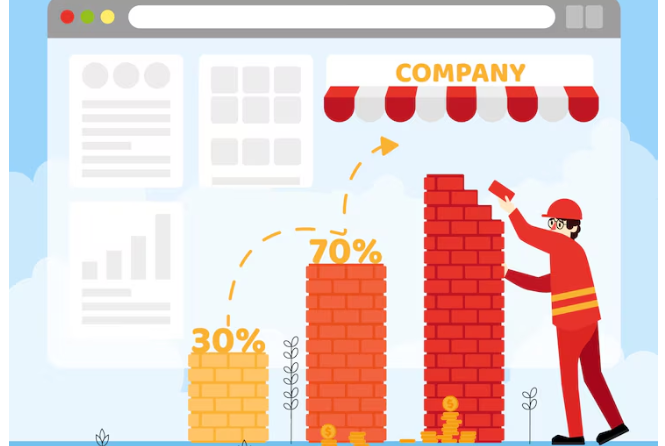Cash flow is the heartbeat of any business — for mini mart owners, making sure it flows smoothly and efficiently is a key component in success over the long term. Cash flow, as one of the most important indicators of financial health, measures exactly how much money is going in and out your business. If you don’t know where you stand on cash flow then you can hardly cover costs or invest for growth, much less maintain an enterprise. Financial metrics to track and ensure positive cash flow for sustainable operations at your mini mart.
1. Net Cash Flow
The basic cash-flow metric calculates the difference between cash flows and which direction they are heading. Incomings are mainly revenue from sales, loans received by the company, while outgoings represent all expenses of a company including rent, water, electricity and so on purchase of first stock. If your mini mart is generating cash faster than it goes out you have a positive net cash flow – which is essential for both growth as well as stability. Conversely if your cash outflow is greater than your inflow then you will need immediate action to combat that negative flow
2.Operating Cash Flow
Operating cash flow (OCF) shows you the actual cash produced by your mini mart ‘s activities over the course of a month, not including investments or financing. This is an important index because it indicates whether the business is able to sustain itself day by day. To calculate OCF, subtract operating costs — things like production costs, salaries and utilities for an example — from gross income. A high OCF shows that your mini market can cover its day-to-day costs from its own gross income, reducing any reliance on outside financing or loans.
3. Cash Flow from Investing Activities
Another way to look at investing activities in terms of cash flow–since what you’re really doing with these investments (buying assets such as new equipment, refurbishing your store or selling off old ones) is adding up the outflows and inflows themselves If we think of our mini mart’s expansion when it comes to this, then: isn’t it vitally important to make sure that both streams don’t interfere with each other too much and throw its internal liquidity off balance?
4 .Cash Flow from Financing Activities
For business owners who own mini marts, your own concern lies with cash flow from financing activities. A flow of money from borrowing or repaying debt and opening or buying into shares– how does this kind flow affect the bank deposits for which you have responsibility and thence the credit line on all capital accounts (e.g. owner financing) against which this generated cash is kept too tallies outcomes in general Think about what high inflows might mean for financing of activities. It indicates more debt may be coming into your business and that could be risky if not carefully managed. On the other hand you might not want large outflows. These could show that your mart is drawing down debts, or paying cash back to shareholders which could lead directly into annual dividends.
5 .Cash Conversion Cycle (CCC)
The CCC is a measure of how quickly a company can convert its investment in inventory and other assets that do not bring immediate cash into sales. It is calculated by adding Days Inventory Outstanding (DIO), Days Sales Outstanding (DSO) and subtracting Days Payable Outstanding (DPO). A lower CCC means your mart is using its stock well, sees to it that any payments due from customers are made quickly and catches the allures of suppliers’ discounts in their payment terms. The quicker you can get paid for goods sold or otherwise liquidate stock -natural after DSI/R from months to weeks- for example by reducing it into cash through sales-days off the business cycle.
6. Break-Even Point
Break-even refers to company’s total income equal to the costs incurred, where there is no profit or loss. In relation to your mini mart, understanding when you will break even is critical for cash flow management it tells you how many units are needed to produce a positive gross profit by factoring in both fixed and variable expenses. By determining your break-even point, you can assess anticipated sales goals and pricing policies in order to plot a strategy for profitability and smooth cash flow at the mini mart.
7. Working Capital
Working capital is the extra amount remaining after deducting current liabilities from short term assets. To put it more simply, your mini mart’s current assets (think: cash, inventory, and accounts receivable) minus its current liabilities (e.g. accounts payable and short-term debt). This enables you to determine both the short-term financial health of your mini mart and its capacity to meet day-to-day responsibilities. When working capital is positive, that means you can meet your obligations on time, which is essential for financial liquidity as well as being able to handle unexpected expenses. Monitoring your working capital allows you to ensure that your mini mart has the resources needed for smooth operation.
Conclusion
These key financial measures mean refreshing your mini mart’s cash flow and assuring that it can keep going in the long term.By having command of your net cash flow, operating cash flow and other critical measures, you can get urgent information upon which to base decisions that will protect your company’s financial health Keeping an eye on these measures and analyzing them consistently not simply save your mini mart from cash exhaustion but also positions it for future exploitation and profit growth.
